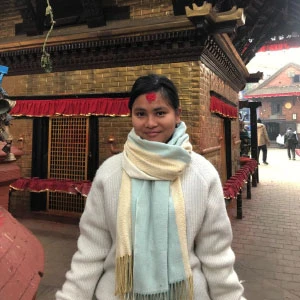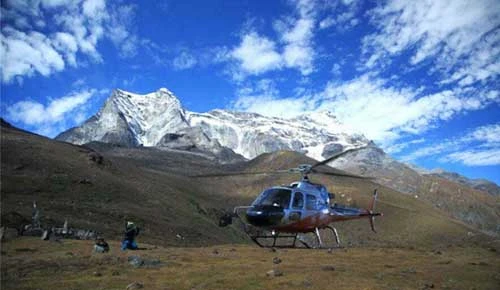Most Popular Trekking Peaks in Nepal
Nepal is a climber’s paradise, a land where the tallest peaks in the world stand over ancient Sherpa villages, twisting glaciers, and religious trails. The country offers countless opportunities for adventure, starting with the majestic Everest and moving to the smaller peaks. Among the trekking peaks, they stand out as a perfect combination of trekking and mountaineering, accessible to fit trekkers yet challenging enough to provide a truly Himalayan mountaineering experience.
Whether you desire to climb the famous Island Peak, tackle the great Mera Peak, or test your skills on Lobuche West, Nepal offers trekking peaks for all levels of climbers. These expeditions provide mountaineers with breathtaking views of the world’s highest mountains but also immerse them in excellent, rich cultural scenery, hospitality, and lifetime experiences above the clouds.
In this 2025 guide to the most popular trekking peaks in Nepal, you will discover the best summits to encourage beginners and experienced climbers to explore the Himalayas, seasons, permits, gear, and tips for preparation to make your visit to the Himalayas memorable.

Why Is Nepal the World’s Best Destination for Trekking Peak Climbing?
The Allure of the Himalayas
There’s no place on Earth quite like the Himalayas. Nepal is home to eight of the world’s fourteen highest peaks, where the mountainous scenery is dramatically varied. The climb here means trekking through rhododendron forests and high suspension bridges and trekking up to sunrise views of Everest, Lhotse, or Ama Dablam. Every summit promises a deep connection with nature and adventure, from Island Peak’s iconic Imja Valley to Mera Peak’s sweeping Makalu views.
Trekking Peaks vs. Expedition Peaks
One reason Nepal attracts so many adventure seekers is its range of trekking peaks. The Nepal Mountaineering Association (NMA) formally classifies these mountains, typically situated below 7,000 meters and accessible to medium-level experienced climbers. Trekking peaks such as Lobuche East and Pisang Peak do not require advanced mountaineering permits or extensive logistics like those needed for major expeditions such as Everest or Manaslu; however, they still provide a thrilling experience and a sense of achievement. This group makes them perfect for the trekkers who desire to move to the next level and step into the world of alpine climbing in a safe and affordable way.
Nepal Mountaineering Association (NMA) and Peak Classifications
The NMA governs trekking peak management and the permit system across the entirety of Nepal. It categorizes these mountains into two major groups, namely Group A (difficult) and Group B (easy or moderate), depending on their technicality and altitude. This classification would ensure safety, encourage more local guiding experience, and streamline the climbing process. Through the partnership with registered guides and certified agencies, the climbers gain access to reliable logistics, insurance policies, and ethical climbing, which are the fundamental components of trust and authority in Himalayan mountaineering.
Whether it is the Island and Lobuche Peaks of the Everest Region or the Pisang Peak of the Annapurna Region, Nepal remains committed to its reputation of being the ultimate destination when it comes to trekking and peak climbing with stunning views, rich cultural experience, and authentic adventure.
Table of Contents
Top Trekking Peaks in Nepal
Island Peak (Imja Tse)
Island Peak, formally known as Imja Tse (6,189m), is the most popular trekking peak in Nepal and a perfect first Himalayan climb. Located in the Everest Region, this stunning peak rises between Lhotse and Ama Dablam, offering breathtaking views from the summit. The route combines a picturesque trek of Sherpa villages and monasteries with a thrilling glacier ascent near Everest Base Camp. Climbers experience both trekking and some basic mountaineering techniques, like the use of ropes, crampons, and ice axes. Island Peak is a challenging but affordable mountain, which offers a wonderful option to the experienced trekker willing to take his/her adventure to new heights.
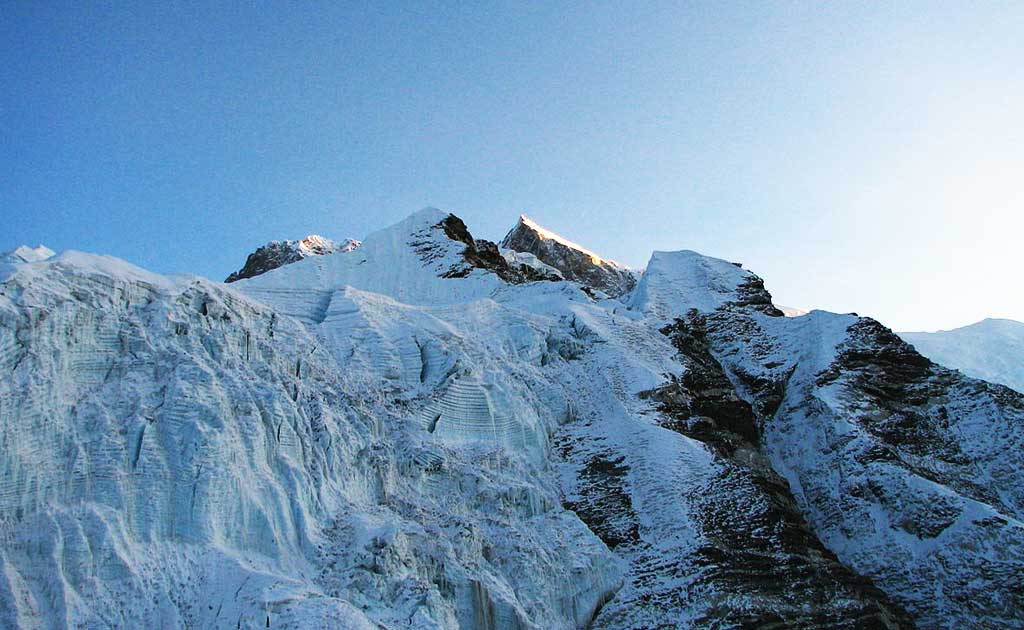
Mera Peak
Towering above the Hinku Valley, Mera Peak is Nepal’s highest trekking peak and one of its most rewarding. It is known for its panoramic views of Everest, Lhotse, Makalu, Kanchenjunga and Cho Oyu, which give it an authentic Himalayan scale. Although Mera Peak is relatively high, it is technically straightforward, which makes it an excellent choice for beginners with outstanding fitness and proper acclimatization. The expedition through remote Sherpa villages and untouched forests of Makalu Barun National Park further enhances its attractiveness. For those dreaming of their first 6,000-meter climb, Mera Peak delivers both challenge and serenity.
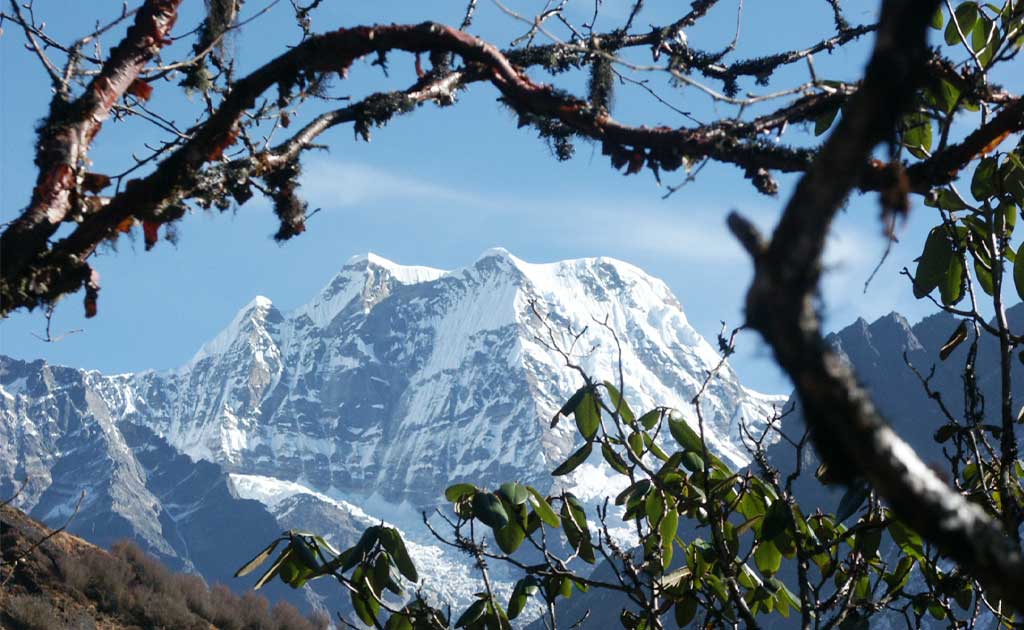
Lobuche East Peak
Lobuche East Peak (6,119 m), located very near the Everest Base Camp, is a popular route among climbers who want to combine adventure and a classical trek with a thrilling summit push. The route offers breathtaking scenes of Everest, Nuptse, Pumori, and Lhotse, as well as technical sections and a true climbing experience. Lobuche East is steep as compared to Island Peak, featuring rock slabs and ice slopes that require basic skills in rope and crampon. Many climbers use it as a training ground before larger expeditions. With its close proximity to the Everest Base Camp trail, it’s one of Nepal’s most accessible and satisfying climbs.
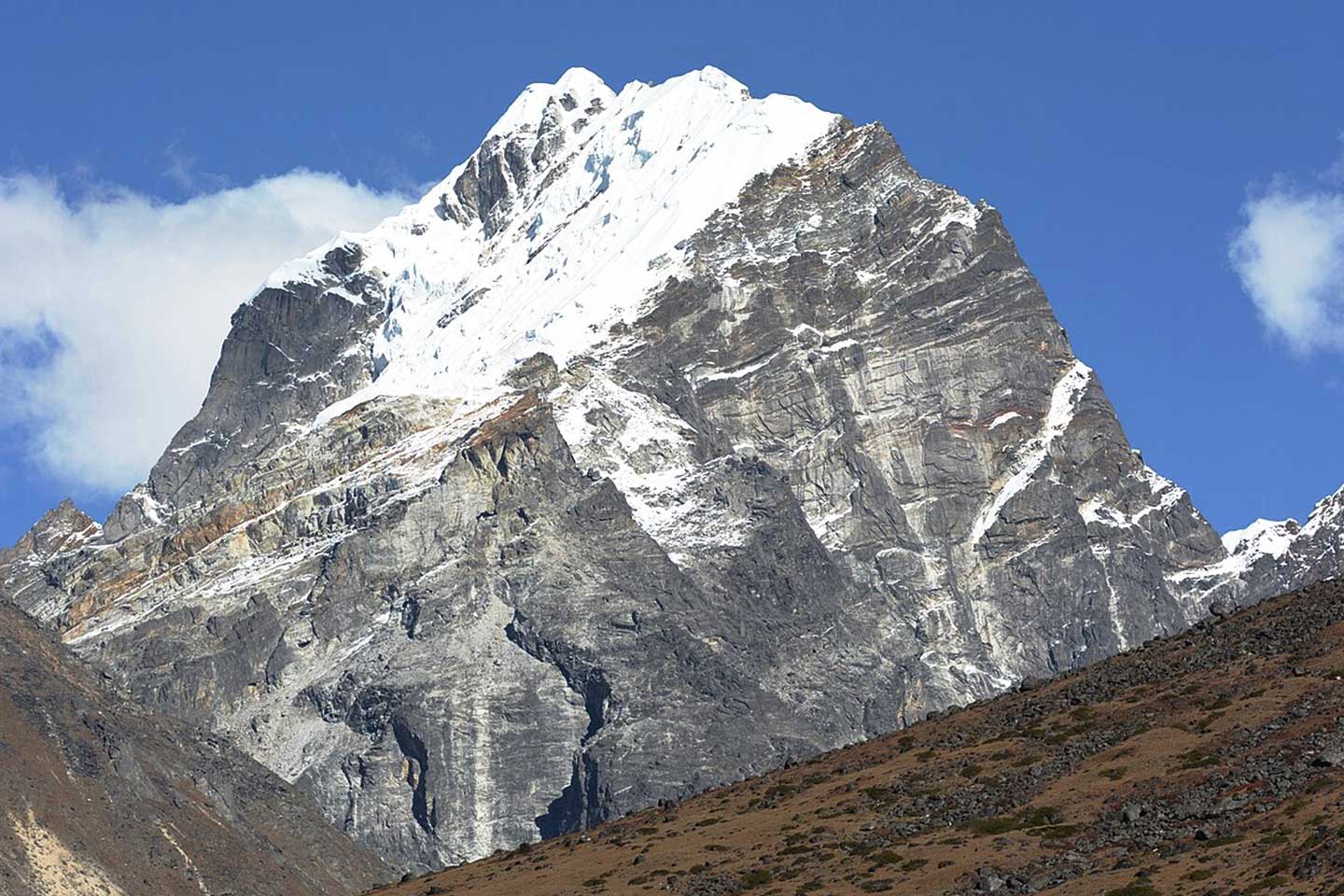
Pisang Peak
Pisang Peak (6,091 m), situated above the scenic village of Pisang in the Annapurna Region, is the ideal location to have a combination of trekking, culture, and mountaineering adventure. The route takes an alternative to the Annapurna Circuit, passing through Tibetan-style villages and high mountain passes. The final climb involves snow slopes and ridges that challenge but reward the climbers with the magnificent views of Annapurna II, III, Gangapurna, and Tilicho Peak. Pisang Peak is ideal for those who enjoy a scenic and moderately technical climb; it is recognized as one of the most photogenic trekking peaks in Nepal and is famous among both adventure photographers and professional mountaineers.

Lobuche West Peak
Standing at 6,145 meters, Lobuche West Peak is one of Nepal’s most demanding trekking peaks, suitable only for experienced climbers. It’s often approached from Lobuche East, but the two are separated by a steep, exposed ridge that adds technical difficulty. Fixed ropes, steep snow slopes, and high-level mountaineering skills are required to reach the summit. However, the reward is beyond words: a panoramic 360 degrees of Everest, Cho in the background, and Pumori and Ama Dablam viewable during the peak. Lobuche West is the final summit for mountaineers who wish to receive a tougher and more isolated experience in the Himalayas.

Best Time for Trekking Peak Climbing in Nepal (and Why It Matters)
When it comes to trekking and peak climbing in Nepal, timing is everything. The diverse geography of the country, with its subtropical valleys and glaciated mountain passages, means that weather conditions can vary dramatically throughout the year. Select the right season not only enhances your summit chances but also ensures safety, visibility, and overall climbing comfort.
Spring Season (March to May)
Spring is one of the most favorable and stable seasons for trekking and climbing peaks in Nepal. As the winter snow melts, the trails reopen, revealing the colorful nature of the Himalayas. The climate is stable, the skies are clear, and the average temperature is comfortable in the daytime at mid-altitudes; thus, it is perfect for both trekking and acclimatization. This period is also the season when rhododendron forests are in blossom and they appear as breathtaking against the snowy summits. Climbs like Island Peak, Mera Peak, and Pisang Peak, which are especially fulfilling in spring due to excellent conditions of ice and clear visibility. Less strong winds and longer days lead to a fantastic photo-taking period and smooth ascents.
Why climb in spring: Stable weather, moderate temperatures, colorful landscapes, and the best snow conditions for climbing.
Autumn Season (September to November)
Autumn is generally regarded as the best season for trekking and climbing in Nepal. Following the monsoon rain, the air becomes clear, the sky takes on an intense blue, and the mountainous views seem to stretch endlessly. The climate is cool and comfortable, and the routes are dry and stable, which makes them a perfect combination for high-altitude treks and technical ascents. Predictable weather in most instances and minimal snowfall make autumn the safest time for many climbers to attempt a summit. Peak ranges such as Lobuche East, Lobuche West, and Mera Peak have high success rates during this autumn. Additionally, the post-monsoon clarity allows for breathtaking panoramic sunrise shots from the summit.
Why climb in autumn: Crystal-clear mountain scenery, few chances of weather interference, and the greatest success rate of mountain ascent.
Winter (December to February) & Summer (June to August)
Although most climbers consider winter and summer (monsoon) off-season, for most climbers, they still appeal to those seeking solitude and adventure.
- At higher altitudes, Winter is cold and snowy; however, it is peaceful in the country, and trails are not crowded. Winter climbers who have experience and have the appropriate equipment can go out to lower- or mid-altitude peaks like Pisang or Island Peak in early December.
- Summer (June-August) has been associated with the monsoon, which is characterized by rain and low visibility in most areas. However, some of the rain-shadow regions, including Upper Mustang or Manang are fairly dry and reachable.
Why climb in off-seasons: Fewer people, peaceful trails, and the possibility to explore the Himalayas in their pure and untouched beauty, suitable only for well-trained adventurers
How Difficult Are the Trekking Peaks in Nepal?
- Varies by Peak Category: Nepal’s trekking peaks range from moderate (like Mera Peak) to technical climbs (like Island Peak or Lobuche East), so difficulty depends on the mountain’s elevation and route.
- Altitude Challenges: Most trekking peaks rise above 5,500–6,500 meters, where thin air and risk of altitude sickness significantly increase the challenge.
- Technical Skills Required: Easier peaks need basic mountaineering skills, while technical ones require rope handling, crampon use, and ice axe techniques.
- Physical Fitness: Climbers must have excellent stamina, endurance, and leg strength to tackle long ascents and thin air at high altitudes.
- Weather Conditions: Unpredictable mountain weather, including snowstorms and cold winds, can quickly make even simple climbs difficult.
- Route Length and Acclimatization: Longer routes with gradual acclimatization are easier; rapid ascents increase risk and difficulty.
- Support and Guidance: Trekking with experienced guides and Sherpas reduces difficulty by offering local knowledge, technical help, and safety support.
- Mental Strength: Climbing in the Himalayas requires strong mental resilience to deal with fatigue, isolation, and changing mountain conditions..
What to Pack for Trekking Peak Expeditions in Nepal?
Preparing for trekking peaks in Nepal requires careful planning and attention to detail. The right gear and clothing are essential for safety, comfort, and success on peaks like Island Peak, Mera Peak, Lobuche East, or Lobuche West. Trekking peaks in Nepal involves a mix of trekking trails and alpine climbing, so packing properly ensures you are ready for both conditions.
Essential Climbing Gear for Trekking Peaks in Nepal
For any trekking peak climb in Nepal, mountaineering gear is a must. This includes an ice axe, crampons, a climbing harness, a helmet, and ropes. Whether you are attempting beginner-friendly peaks like Island Peak or more technical climbs like Lobuche West, having the correct gear is critical. Certified guides for trekking peaks in Nepal usually check your equipment before starting the ascent to make sure every climber is prepared for snow, ice, and glacier trekking.
Clothing and Layering for Himalayan Conditions
The weather on trekking peaks in Nepal can change rapidly. Proper layering is essential for safety and comfort. Climbers should wear moisture-wicking base layers, insulating mid-layers, and a waterproof, windproof outer shell. Warm gloves, hats, and thermal socks are crucial for high-altitude climbs like Mera Peak or Lobuche West. Sturdy trekking boots compatible with crampons are required for both trekking trails and climbing routes. Proper clothing ensures a safer and more enjoyable experience while climbing trekking peaks in Nepal.
Optional Gear and Accessories
Additional items that improve comfort and safety during trekking peak climbs include trekking poles, high-quality sunglasses, sunscreen, and a durable backpack. Many trekkers also carry cameras to capture the breathtaking Himalayan scenery. For peaks above 6,000 meters, a sub-zero sleeping bag is recommended, especially for longer expeditions. Packing these items carefully can make your trekking peak adventure in Nepal safer, smoother, and more memorable.
Renting vs Buying Gear in Nepal
Many climbers choose to rent expensive gear in Kathmandu or nearby trekking towns. This is a convenient option for trekking peaks in Nepal, especially for items like crampons, ice axes, or climbing harnesses. However, for hygiene, comfort, and reliability, it's best to bring personal items like gloves, thermal clothing, and backpacks from home. Preparing your gear properly ensures that your trekking experience on the peaks in Nepal is both safe and enjoyable.
Recommended Trekking Agencies & Guides for Trekking Peaks in Nepal
Climbing trekking peaks in Nepal is not just about reaching the summit; it’s also about safety, planning, and having expert guidance. Licensed trekking agencies and professional guides ensure that every climb, whether it’s Island Peak, Mera Peak, Lobuche East, or Lobuche West, is safe, well-organized, and enjoyable. They handle permits, logistics, and emergency support, allowing climbers to focus on the adventure itself.
Why You Should Use Licensed Agencies
Trekking peaks in Nepal requires official NMA permits, national park entry fees, and adherence to safety regulations. Trusted trekking agencies take care of all these legalities, making the process smoother for climbers. A professional agency also provides experienced guides who are familiar with high-altitude routes, glacier travel, and unpredictable Himalayan weather. For beginners climbing Island Peak or advanced mountaineers tackling Lobuche West, having a certified guide significantly increases safety and the chances of a successful summit.
- Services Provided by Trekking Agencies in Nepal
- A reliable agency for trekking peaks in Nepal typically offers:
- Permit processing and route planning for peaks like Mera Peak or Pisang Peak
- Trained and licensed mountain guides and porters
- High-altitude rescue and emergency support
- Equipment rental advice and logistical assistance
- Insurance coverage and evacuation arrangements
These services are particularly important for first-time climbers or those attempting challenging peaks such as Lobuche West, where technical skills and safety precautions are essential.
Choosing the Right Guide or Agency
Make sure the agency you choose for trekking peaks in Nepal has registered with the Nepal Mountaineering Association (NMA). Check for positive reviews, experienced guides, and proper insurance coverage. Whether you are climbing a beginner-friendly peak like Island Peak or a demanding summit like Lobuche West, working with a trusted agency enhances your Himalayan adventure while keeping you safe and legally compliant.
Which Trekking Peak Should You Choose in Nepal?
- Assess Your Experience Level: Beginners should start with non-technical peaks like Mera Peak or Pisang Peak, while experienced climbers can go for technical challenges like Island Peak or Lobuche East.
- Consider Your Physical Fitness: Choose a peak that matches your stamina and training level. Higher and steeper climbs demand excellent endurance and prior trekking experience.
- Altitude Comfort Zone: If you’ve never been above 5,000 meters, start with a lower-altitude trekking peak (around 5,500–6,000 m) to reduce the risk of altitude sickness.
- Technical Difficulty: Some peaks require ice climbing, rope use, and glacier crossings. Make sure your skills (or guide support) match the mountain’s technical grade.
- Duration and Route: Longer expeditions like Mera Peak (18–20 days) offer gradual acclimatization, while shorter climbs like Island Peak (14–16 days) suit those with limited time.
- Season and Weather Conditions: The best seasons are spring (March–May) and autumn (September–November) for stable weather and clear skies. Avoid monsoon or winter climbs unless highly experienced.
- Scenery and Location Preference: If you want Everest region views, pick Island, Lobuche, or Pokalde Peak. For more remote beauty and solitude, Mera or Chulu Peaks in the Annapurna region are ideal.
- Budget and Logistics: Peak permits and gear rental costs vary. Mera and Island are affordable and well-supported, while remote peaks like Chulu or Pisang may require extra logistics and higher expenses.
Conclusion
Nepal’s trekking peaks offer unforgettable Himalayan adventures for all levels, from beginner-friendly Island Peak to challenging Lobuche West. With proper preparation, guidance, and the right peak choice, every climb becomes a safe and rewarding experience.
Book Your Adventure Today!
Join Nepal Trek Adventure to explore Pisang Peak, Island Peak, Mera Peak, Lobuche East, or Lobuche West with expert guides, full support, and seamless logistics. Start your unforgettable Himalayan journey now!




